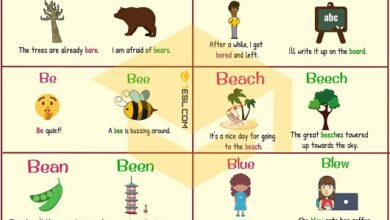Semantic field characteristics types and examples
Semantic field
A semantic field consists of a group of words that have the same meaning and that are part of a different lexical category. An example would be: red, yellow, blue, bluish, greenish, reddish, color, whiten, redden (semantic field of colors). Semantic field characteristics types
The same word belongs to several semantic fields. For example, the words woman, girl, girl, lady, spinster, belong to the “feminine” semantic field. But only “young” girl and girl belong to the semantic field, and spinster to “not married”.
The semantic field is more related to concepts. A matrix of a woman, girl, girl, lady, spinster, would be:
Constant development
In a semantic field, the associations that can be established between the elements of this great mosaic are infinite. Conceptual relationships are constantly growing thanks to sustained development.
Every day, new meanings and ideas are incorporated from science, sports, and politics, among other areas of knowledge.
Language is a reflection of human activities, so it is normal for its advances to translate increasingly interconnected networks of words.
This is enhanced by the phenomenon of globalization that brings different languages into contact. Among others, cooperation between cultures results in new words for common ideas.
Overlap
The semantic field has its scope of existence in the way in which the different words of a language are organized in the mind.
Words in the semantic field are organized according to a very large number of meanings. These include color, flavor, animals, costumes, drinks, or events.
On the other hand, a word can belong to more than one semantic field. For example, in the Spanish language the noun layer belongs to the field of the word dress (clothing) and to that of structure (levels, biology).
Lexical gaps
In all languages, there are situations in which there are empty spaces or gaps within the semantic field. For example, in English a single word is used to mean cousin and cousin ( cousin ).
On the other hand, there are other pairs to differentiate the gender of words related to kinship: mother/father, sister/brother, aunt/uncle.
This can also be illustrated – on the Spanish side – with the word pig. This term is used for both the animal and the food. However, in English, there is a distinction between pig (pig, animal) and pork (pork, food). Semantic field characteristics types
Different status
In a semantic field, not all semantic elements necessarily have the same status. For example, the words blue, red, yellow. green. black, purple, indigo, royal blue, aquamarine, and cyan belong to the color field.
However, the former is more commonly used. These are considered less marked members of the semantic field and are often easier to learn and remember. In fact, children learn the term blue first before they do indigo, royal blue, or aqua.
Often, a less marked word consists of a single morpheme (blue, for example), in contrast to the more marked words (royal blue).
In fact, the least marked member cannot be described using the name of another member. So, you can say Cyan is a type of blue. But the opposite is not feasible (* Blue is a type of cyan ).
Also, the less marked elements tend to be used more frequently than the more marked terms. For example, the word blue occurs much more frequently in conversation and writing than aqua or royal blue.
Types
Open
Within the open semantic fields are included those whose number of words is infinite or indeterminate. An example of this would be the types of food (pasta, tamales, fast food, salads, cakes, soups, stews, fried foods …).
Closed
In very specific cases, the number of words that could belong to a certain semantic field is finite. Such is the case of the days of the week, the zodiacal signs or the seas of the world.
Graduates
In some cases, the words that make up a semantic field are encompassed in two extremes. This is the case for the entire range of words that are between large and small or between bad and good (such as medium or fair, respectively).
Associative
A semantic field can be made up of words related to a concept. This is the criterion used by ideological dictionaries, very popular during the 19th and a good part of the 20th centuries.
In this way, an idea or concept is related to a series of broader (categories, general ideas) or more specific terms. So, for example, the words curtain and decorator belong to the same semantic field by association.
Examples
Here are some examples of the semantic field. It should be noted that the lists are not complete. This is because the system of relationships between words is extensive and complex in most cases.
Semantic field of colors
- Nouns: red, yellow, blue, orange, green, purple, brown, black, magenta, bronze, cyan, olive green, maroon, navy blue, aquamarine, turquoise, silver … crayons, watercolor, markers, paint …
- Adjectives: bluish, greenish, reddish, whitish, yellowish, red, tan, blackened, bleached …
- Verbs: bleach, redden, color, paint, bleach, stain, blacken …
Semantic field of animals
- Nouns: bull, donkey, horse, duck, shark, octopus, seal, eagle, hummingbird, mouse, squirrel, bear, giraffe, rhinoceros, butterfly, spider, wasp, cat, tiger… flock, shoal, herd, flock… farm, jungle, jungle, zoo … howl, squawk, growl …
- Adjectives: domestic, wild … Semantic field characteristics types
- Verbs: tame, tame, graze, hunt, herd, castrate …



